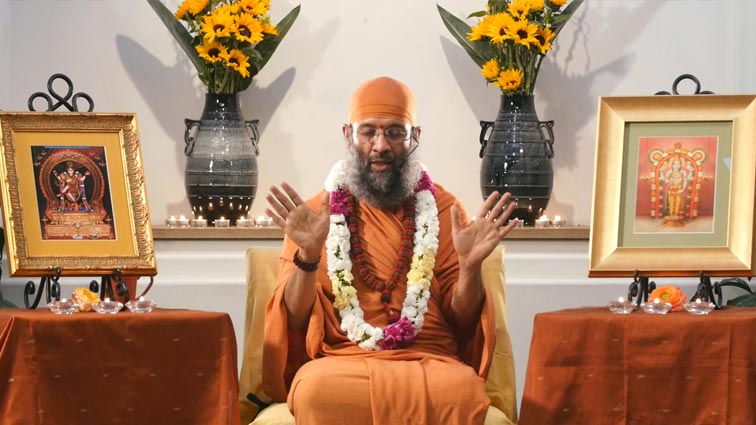Breath is the link between body and mind. Breathing is fulfilling and helps release emotions. Deep breathing may alter our perception allowing us to pause for reflection. We all experience that our awareness is connected with breathwork. When we are in awe of tranquility, the breath often pauses as in a breathtaking moment. We seem to catch our breath and recognize the moment. Thus Yoga philosophy places breathing as the bridge between the tangible and the intangible, at the cusp of the physical and the subtle.
As everyone knows, breathing fresh air is a rejuvenating experience. Oxygenation during early morning breathwork and exposure to sunlight during the first hour after sunrise form recommended parts of wellness routines. Most breathing techniques are best practiced on an empty stomach and after evacuating. This is helpful in creating room to fully feel the movement of the breath. Awareness of natural and regular breath movement is said to be the forerunner of mindfulness. To be present with each moment while naturally aware of the breath is a hallmark of mindfulness.
In contrast, emotions take their grip when one forgets to breathe properly. Emotional choking results from disrupted breathing. Therefore correct breathing is extremely beneficial for emotional balance. Yoga philosophy considers emotional disturbance to be a greater obstacle than physical disturbance for contemplation. Thus bodily pain is taken to be a lesser hindrance than emotional pain for meditation. Concentration is dependent on the rhythm of the restful breathing, wherein the breathwork brings about a focus free from distracting thoughts and emotions. Conquest of internal chatter is then flooded by peace.
Yogic practices in the Himalayan terrain have been known to lay emphasis on correct breathing techniques. Himalayan yoga teaches us to invoke end points within our body coordinates whenever we need to breathe deeply. Yogis train beginners in meditation to feel the normal breath first touching the mid-point between the two eyebrows and then merging into the heart area. A subtle movement sensation in the sternum brings focus into the center of the chest. This is said to increase awareness of sentience and the preciousness of breath.
In regards to inhalation, a fuller breath is said to be an inspiration from the lower belly up. Inhaling in the upper chest while contracting the lower abdomen inward causes a shallow breath. Unfortunately, this practice is a symptom of improper breathing. Himalayan yoga teaches us to breathe by relaxing and expanding the lower abdomen with a wide open restful chest. While one may have heard about belly breathing methods, it is definitely not necessary to control the breathwork by thinking of the diaphragm and its movement. The muscles of the entire torso need to be relaxed and the breathwork should not cause flickering in and around the eyes. Thus all four parts − the eyebrows, eyelids, eyelashes and the eyeballs − must be relaxed so that the physical eyes are disengaged. A full breath can be practiced correctly by focusing at a level the width of five fingers below the belly button. This defines the point at the center of the front of the core. This frontal point of the core is where the yogi or martial artist gathers vital energy.
If one were to make a conic projection frontward from the second chakra point in the spinal column, this would project a circular area onto the lower belly just above the groin. This is a way of conceptualizing the front of the core as a cone-shaped area with its tip in the spinal column. The center of this ventral core below the navel is a point where maximum heat can be introduced into the body. Ayurvedic healing traditions, especially those practiced in Himalaya, use this point to induct heat into the body. This point is right in front of the bladder and therein lies the secret of breath control. The bladder relaxes and contracts as the control center. Thus inhalation requires relaxing the bladder area outward as in expanding the lower belly, whereas exhalation is effected by a conscious contraction of the bladder area pulling the lower belly inward toward the spine. The guiding attention is more on the bladder, even as the inhalation pushes the diaphragm down and the exhalation allows the belly to flatten due to the diaphragm moving up. Breathing from the core using the water-storing bladder makes a full breath happen correctly and helps release emotions the yogic way.


